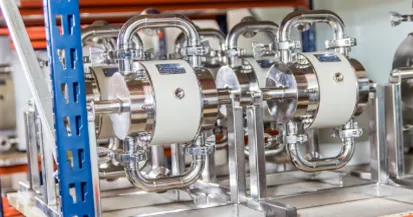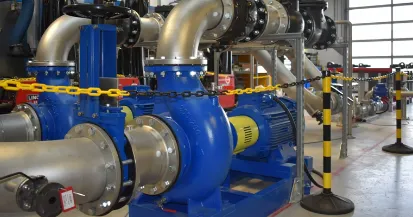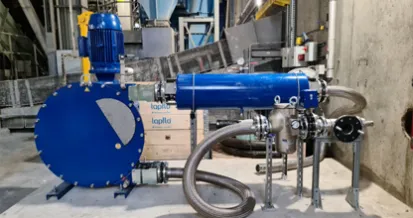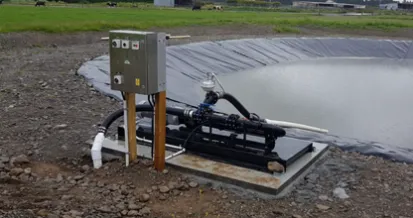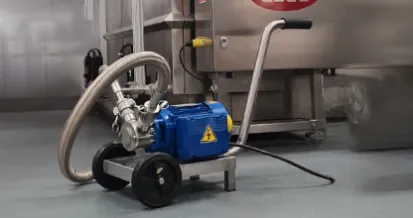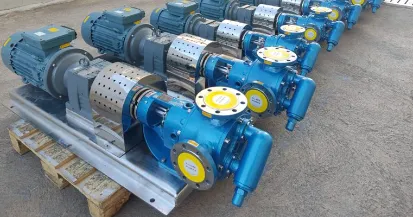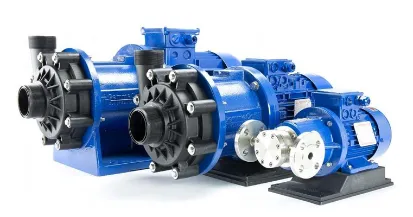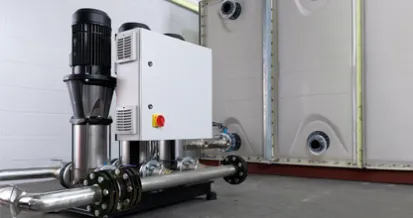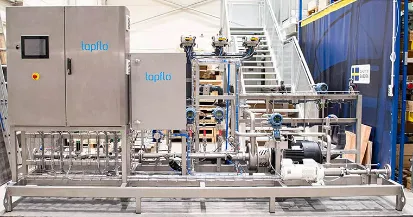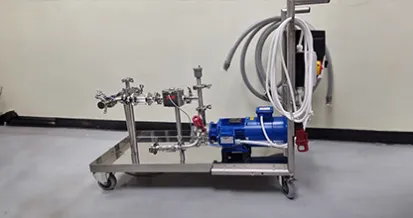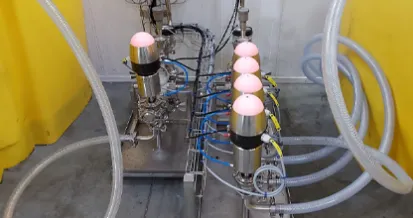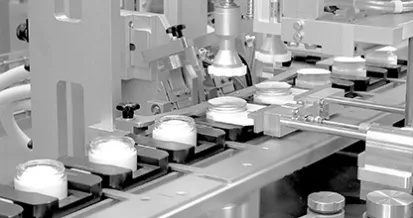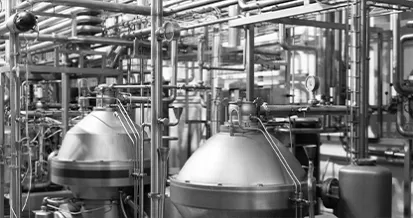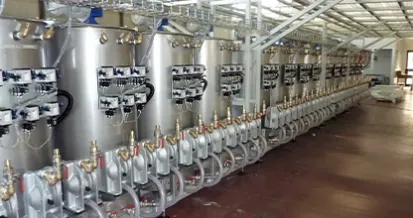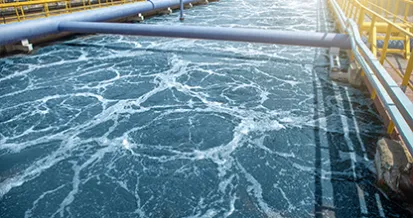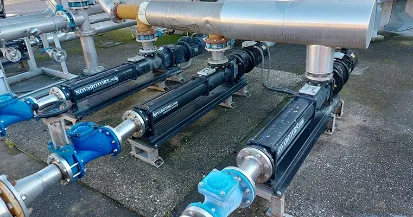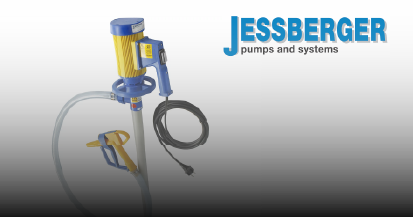To read a pump performance curve, you need to bear in mind that all performance curves are based on water at 20°C with the pump having ample NPSHa. Other circumstances, such as changes in viscosity and suction lift, will change the performance.
In the above example, a flow rate of 25 l/min is desired and a discharge head of 30 m has been calculated.
A line is drawn up from the desired flow rate on the bottom axis and a separate line drawn across from the desired head on the left axis. Where they intersect provides an indication of the required air pressure at the duty point (Dark Blue line) as well as the air consumption at the duty point (Light Blue line).
In the above example, when considering the T50 Diaphragm Pump, the pump would require an air pressure of 5 bar and would consume approx 0.2 Nm³ air per minute. If the customer doesn’t have this amount of air pressure and volume available from their air supply then it would be advisable to increase the size of the pump to the T100, which for the same duty would only require approx. 4 bar air pressure and only consume just over 0.1 Nm³ air per minute.

Pump Performance Curve Changes in Capacity
As mentioned, an AODDs capacity will vary according to changes in both viscosity and suction lift. These variations need to be taken into account when selecting a suitable pump. Below is a chart displaying the % flow rate available according to changes in suction lift.

If the intended application requires a 4m suction lift, for example, then the percentage of available flow rate from the pump in question would only be 80%. Therefore, when considering a pump for a suction lift application you need to add onto the flow on the curve the percentage drop inflow to achieve the required flow rate. In this example, it would be 20%. So when considering the T50 for 25 l/min at 30 m Head, with a 4m suction lift, you would need to plot 31.25 l/min from the flow axis to determine the required air pressure and air consumption.

In the case of the T50, this would change the air pressure required to just under 8 bar and the air consumption to approx. 0.4 Nm³. This would render the T50 unsuitable for the intended application as not many sites have this amount of air pressure and volume available and you would need to consider either the T100 or even T200.
Here at Tapflo UK, we can provide you with the necessary technical information you need for your pump and assist with any questions or concerns you may have along the way. Contact our expert team today or have a browse at the pump products we supply and manufacture.

